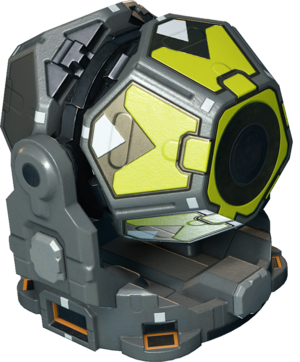Navigation receivers
Summary

A navigation receiver is a device that can receive signals sent out by Radio transmitters.
Basic information
- Have to be pointed to the direction of a transmitter.
- They only look for signals in the area they're pointed at. This means that receivers may have to scan areas section by section to find transmitter messages.
- If a receiver is in the range of a transmitter and is pointed towards the transmitter, the transmitter's message is set to the receiver's "Message"-field.
- Both large and small receivers currently have the same properties.
Device fields
To learn more about how to use fields, consult these wiki pages:
| YOLOL field | description | range |
|---|---|---|
| Message | Found message | 0 |
| SignalStrength | Strength of the found signal, measured in meters | 0 |
| ListenAngle | An angle of 180 coresponds to an omnidirectional receiver. | 0-180 |
| TargetMessage | The message the receiver will exclusively listen to, 0 means listens to all | 0 |
| TargetFrequency | The frequency the receiver will exclusively listen to, 0 means listens to all | 0 |
| Frequency | The frequency of the transmitter currently listened to, 0 if no signal found. | 0 |
| ReceiverPitch | Target pitch of the device | 0 |
| ReceiverCurrentPitch | Current pitch of the device | 0 |
| MaxRotation | Maximum limit for rotation | 180 |
| MinRotation | Minimum limit for rotation | -180 |
| TargetVelocity | Target velocity in which the device rotates | 0-3 |